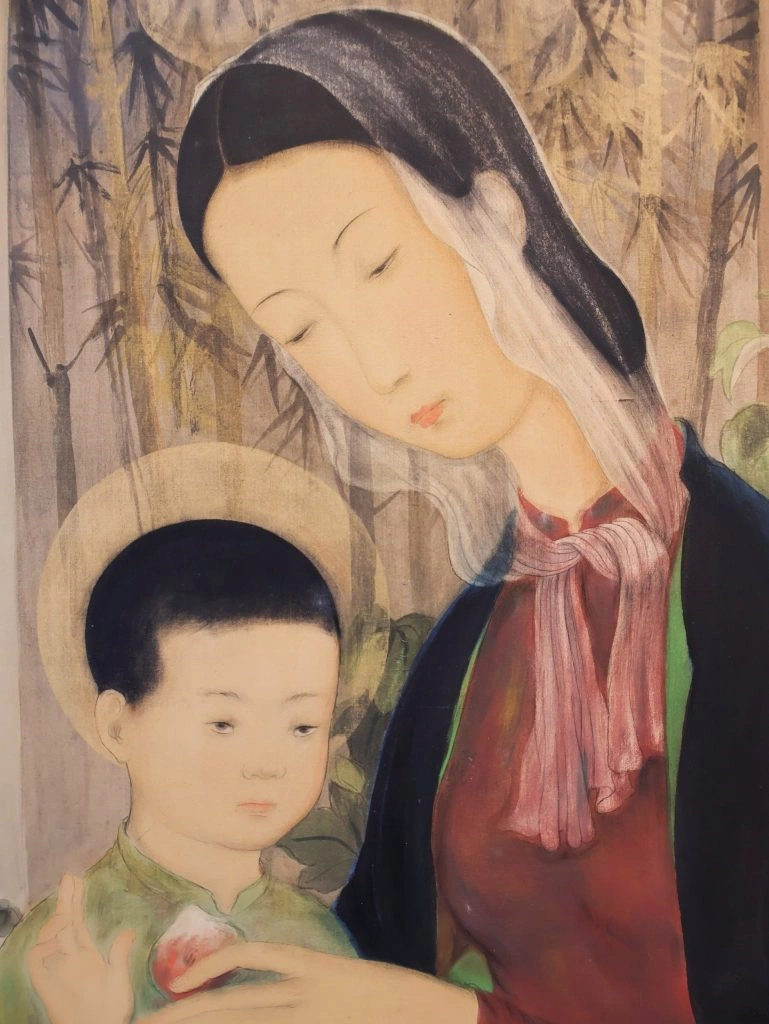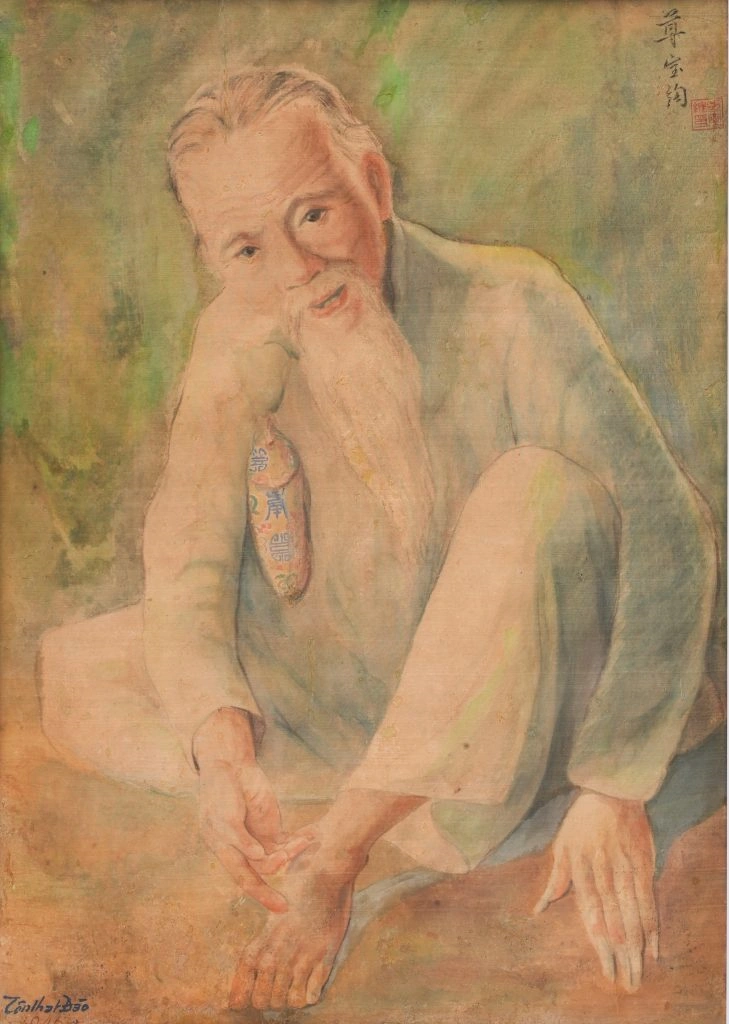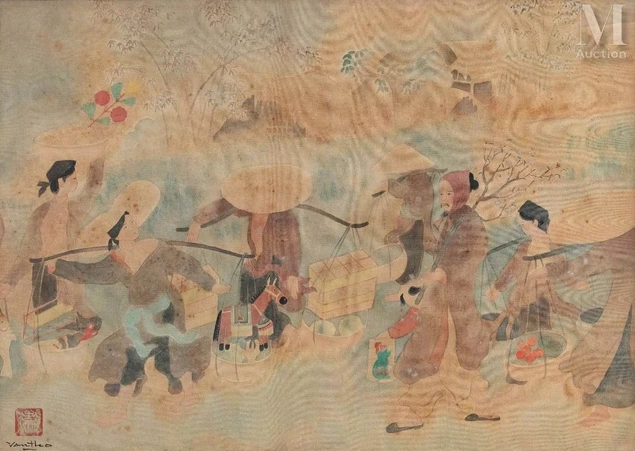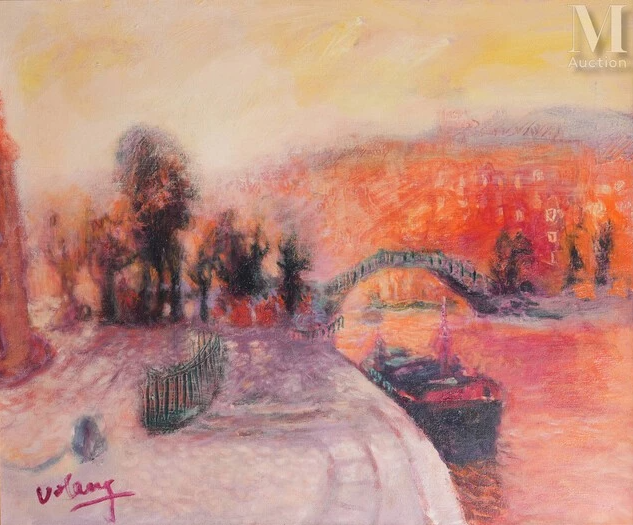The image of the Virgin Mary holds an important position in Catholicism. Throughout the history of world art, artists have been inspired by the beauty and virtue of the Virgin Mary to freely create a “beauty of the Virgin Mary” according to their own concept. In addition, the creation of the Virgin Mary and the Child Jesus are two inseparable subjects of “maternal love”, making the appeal of this theme never run out of creativity from artists.
From Europe to Asia, America, even far away Africa, if there is Catholicism, this image is always present in all social classes. The Virgin Mary is always portrayed as a beautiful, gentle, holy woman in a poetic, peaceful setting. The Child Jesus is a chubby, pretty, adorable baby boy. The atmosphere in the work always radiates warmth from the love between mother and child.
Around 1935-1945, Lê Phổ pursued the theme of motherhood, including the image of the Virgin Mary and the Child Jesus. It could be the birth of Jesus in the manger, or when Jesus became a baby. But the image he portrayed always carries a strong national character and Vietnamese soul.
In the auction on October 12, 2024 of Millon, we are honored to introduce to the art-loving public a beautiful work by Lê Phổ on this theme.
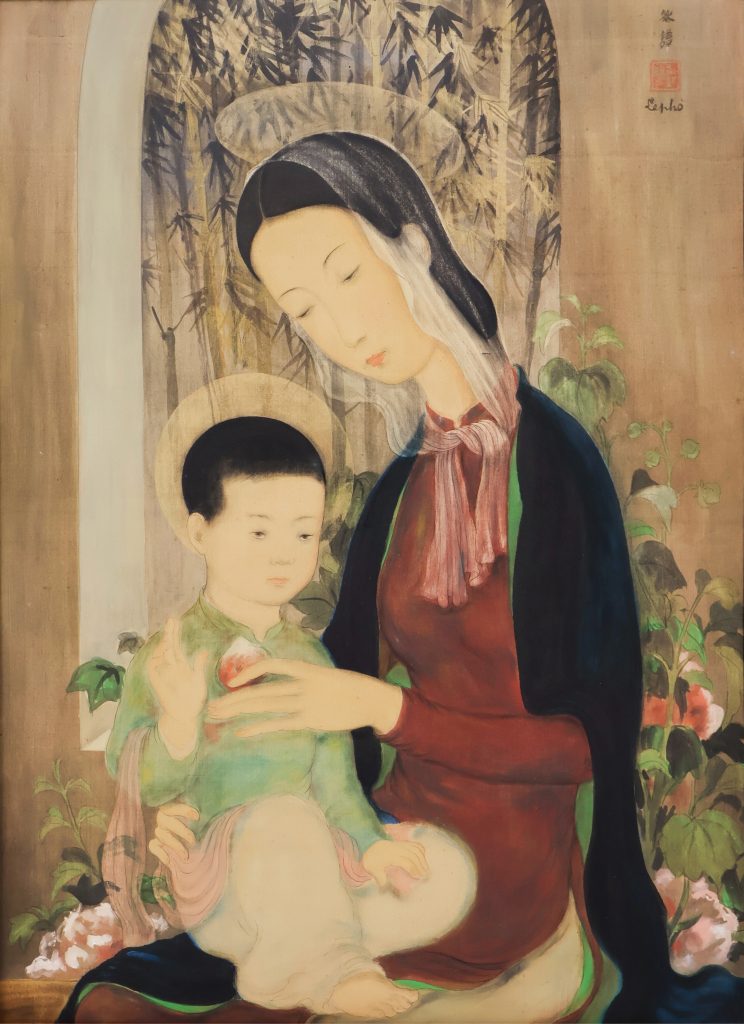
LÊ PHỔ (1907-2001) – “The present from mother”. Date: Circa 1935-1945.
Medium: Ink and colour on silk. Dimensions: 50,5 × 63,5 cm. Provenance: Purchased in a gallery, Paris around 1940.
The grandfather left to the descendants, one of those came to America and brought the painting.
Về căn bản, hình ảnh kinh điển của những sáng tác về chủ đề này ở nghệ thuật cổ điển hàn lâm Châu Âu là một motif rất phổ biến. Lê Phổ tiếp thu tinh hoa nghệ thuật Châu Âu khi học tập tại trường Cao đẳng Mỹ thuật Đông Dương, khi sang Pháp tu nghiệp, đi Ý tham quan bảo tàng… Nhưng dưới lăng kính của ông, chủ đề biểu tượng cho một dòng tôn giáo mang tính quốc tế được dân gian hóa theo tư duy của người họa sĩ bản địa. Điều này đã tạo cho tác phẩm một “hương vị” rất đặc biệt.
Basically, the classic image of works on this theme in European classical academic art is a very popular motif. Lê Phổ absorbed the quintessence of European art when studying at Indochina Fine Arts College, when studying in France, when visiting museums in Italy… But under his lens, the symbolic theme of an international religious line is popularized according to the thinking of the native artist. This has given the work a very special taste.
The Virgin Mary and the Child Jesus are depicted with Vietnamese characters. The costumes are traditional Vietnamese silk fabric. For the mother character, it can also be brocade because the brown áo dài has a slight sheen; the outside is a black velvet cloak, lined with green silk with a thin silk veil. The plants are bamboo, hibiscus. The arched door architecture is both similar to the European style and the arches in Vietnamese religious architecture. In particular, the peach in the Virgin Mary’s hand preparing to give to the Baby Jesus is a symbol of longevity – according to Eastern beliefs.
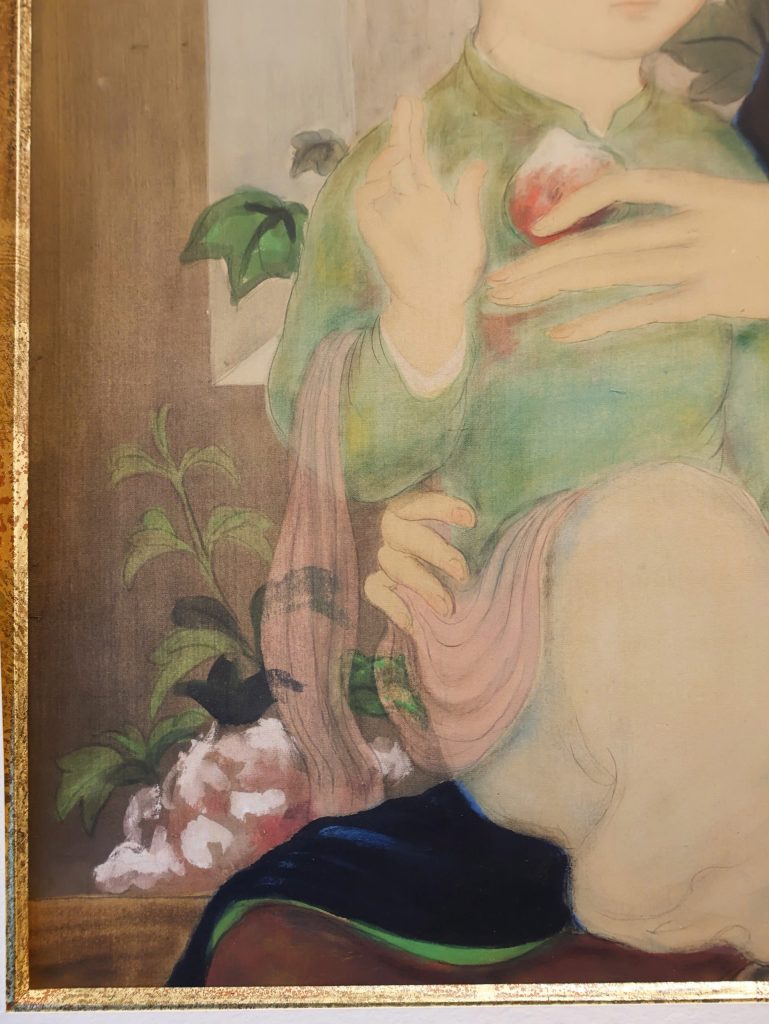
The image of the Virgin Mary holding roses, carnations, and apples is quite popular in Western classical painting. The famous Italian painter Leonardo da Vinci created famous paintings on this theme such as “Madonna with a Flower (or “Madonna Benois”) or “The Madonna of the Carnation” kept at the Museum of Fine Arts in Munich.
Each type of fruit or object placed in the hands of the Virgin Mary or the Child Jesus carries a separate message. Carnations are given to God – symbolizing admiration and respect. Roses symbolize maternal love.
When creating the symbol of the Virgin Mary – the mother, the Child Jesus – the child according to his concept, Lê Phổ Vietnamized the image and details. The Virgin Mary – the mother, gave God – the child a peach – symbolizing longevity. It can also be understood in the sense that – sacred maternal love is eternal, everlasting. It is a priceless gift from Mother to child.
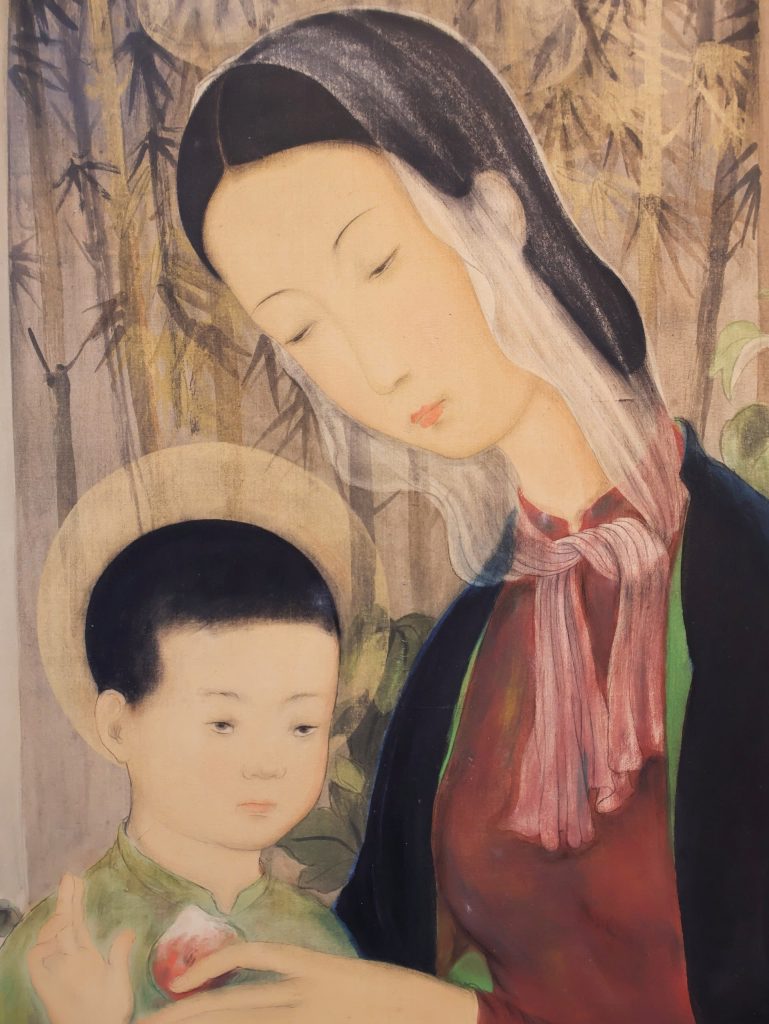
In addition to the high Vietnamization of an international religious theme, in this painting, Lê Phổ has brought to the viewer a feeling that is both sacred and warm, close to real daily life. The Virgin Mary and the Child Jesus are revered in a sacred religious symbol but also a warm maternal love from a family perspective.
With the mindset of a master painter, Lê Phổ expressed his own thoughts and concepts about a difficult subject, both international, traditional, and national.
With superior technique, mastering talented and delicate strokes, harmonious color scheme, typical of Lê Phổ’s color scheme in the years 1935-1945, created in the peak Romanet period… the painting has deeply conveyed the message of maternal love. It is both historical, religious, romantic, regal, based on Eastern culture with the meaning of longevity, health… and above all, it is imbued with the Vietnamese soul. This is the main thing that makes the work attractive.
In the 1942 exhibition catalogue at Galerie d’Art Pasteur Alger for the three painters Mai Trung Thứ-Lê Phổ-Vũ Cao Đàm, in the Lê Phổ catalogue, number 55, there is a work titled “Vierge et enfant – Virgin and Child”, is this the work in that exhibition? We have not found the answer to this question. After carefully analyzing the images and details shown by Lê Phổ in the painting, the name “The present from Mother” is probably the most appropriate.
Written by Bùi Hoàng Anh – Art Director of Viet Art View


